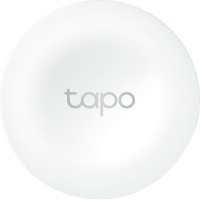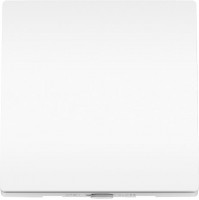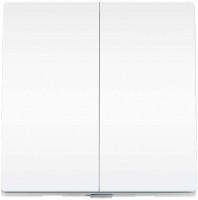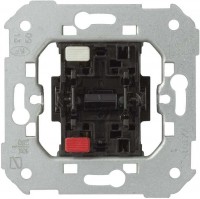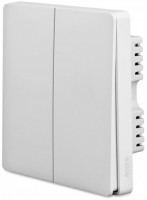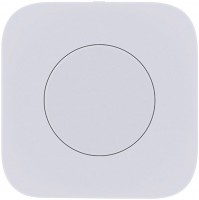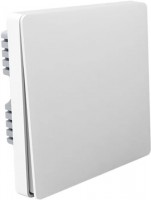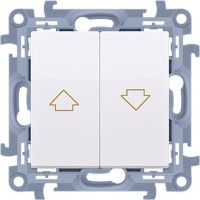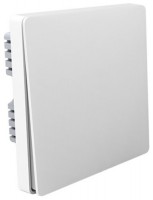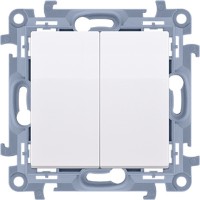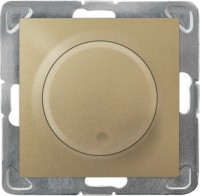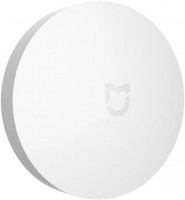Household Switches Schneider
All models Advanced filters → |
You might be interested in
Household Switches: specifications, types
Features
— Doorbell. A characteristic feature of this type of switches is the presence of a spring in the button. The spring automatically returns the button to its original position to eliminate the continuous signal. The vast majority of doorbell switches have compact dimensions, as well as a distinct schematic drawing of the bell on the button. They can be both wired and wireless, there are built-in and overhead models.
— Blinds. The main distinguishing feature of blinds/roller switches is the use of a two-position electrocontact group. Each of the positions determines the direction of rotation of the motor: one of them activates the closing of the blinds, the second — the opening. When choosing a switch for blinds / shutters, it is important to pay attention to the locking status — switches can be with or without locking.
— Smart home. A smart switch is a kind of switches that can be controlled by a smartphone or tablet using proprietary software. Often, smart switches allow you to turn on / off the lighting by SMS, call or timer, as well as from the commands of the security system and other smart devices. The functionality of the device usually goes beyond the standard on / off light. Many models additionally allow you to: adjust the brightness and change the shade of the backlight, switch the lighting to night light mode, etc. Like conventional electrical...accessories, smart switches can be: pass-through and non-pass-through, keyboard and dimmer, with and without network indication.
— Energy-saving (card). Card switch — a device for turning off / on electrical subnets. Usually the card switch is mounted at the front door. When the chip card is removed, secondary electrical networks are turned off, the operation of which is optional if there are no residents or personnel at the facility. These can be subnets that feed the air conditioner, TV, iron, electric stove, lighting, etc. This increases energy savings, and at the same time increases fire safety. Card switches are often used in the field of hotel service, as well as in organizing the work of administrative facilities. The main feature of card switches is the ability to fine-tune each chip card individually. If the administrator's chip card can enable/disable all secondary subnets, then with the help of the service personnel card it will be possible to manage the operation of only those subnets that are allowed in the settings.
— Blinds. The main distinguishing feature of blinds/roller switches is the use of a two-position electrocontact group. Each of the positions determines the direction of rotation of the motor: one of them activates the closing of the blinds, the second — the opening. When choosing a switch for blinds / shutters, it is important to pay attention to the locking status — switches can be with or without locking.
— Smart home. A smart switch is a kind of switches that can be controlled by a smartphone or tablet using proprietary software. Often, smart switches allow you to turn on / off the lighting by SMS, call or timer, as well as from the commands of the security system and other smart devices. The functionality of the device usually goes beyond the standard on / off light. Many models additionally allow you to: adjust the brightness and change the shade of the backlight, switch the lighting to night light mode, etc. Like conventional electrical...accessories, smart switches can be: pass-through and non-pass-through, keyboard and dimmer, with and without network indication.
— Energy-saving (card). Card switch — a device for turning off / on electrical subnets. Usually the card switch is mounted at the front door. When the chip card is removed, secondary electrical networks are turned off, the operation of which is optional if there are no residents or personnel at the facility. These can be subnets that feed the air conditioner, TV, iron, electric stove, lighting, etc. This increases energy savings, and at the same time increases fire safety. Card switches are often used in the field of hotel service, as well as in organizing the work of administrative facilities. The main feature of card switches is the ability to fine-tune each chip card individually. If the administrator's chip card can enable/disable all secondary subnets, then with the help of the service personnel card it will be possible to manage the operation of only those subnets that are allowed in the settings.
Type
— Normal (non-passable). Non-passing switches use the simplest connection scheme. Several wires (phase and zero) are connected to each button, and their functionality is limited to power supply and power off. Conventional switches may have one, two, three or more buttons. Additionally, when choosing electrical accessories, you should pay attention to the type of construction — non-passable switches can be designed for built-in or surface mounting.
— Checkpoint. Pass-through switches use a complex wiring diagram. The phase wire is divided into two or more branches, providing simultaneous connection to two or more switches. The pass-through type connection allows you to turn on and off the lighting or any other current consumer from several (two or more) switches. Such a connection is indispensable in large rooms or long corridors. To turn off the lighting, there is no need to return to the switch at the other end of the room, because you can turn off the light from another switch, which is located at the exit.
— Cross. Cross-type switches are used to turn on / off the lighting system (or other current consumer) from different places. When installing two or more cross switches, any of them can turn on / off the light. This can be very useful when controlling lighting in a large room — in this case, cross switches are mounted in different parts of the obj...ect. Also, models of this type are used as intermediate ones, installed between the switches. As independent cross switches are not used.
— Checkpoint. Pass-through switches use a complex wiring diagram. The phase wire is divided into two or more branches, providing simultaneous connection to two or more switches. The pass-through type connection allows you to turn on and off the lighting or any other current consumer from several (two or more) switches. Such a connection is indispensable in large rooms or long corridors. To turn off the lighting, there is no need to return to the switch at the other end of the room, because you can turn off the light from another switch, which is located at the exit.
— Cross. Cross-type switches are used to turn on / off the lighting system (or other current consumer) from different places. When installing two or more cross switches, any of them can turn on / off the light. This can be very useful when controlling lighting in a large room — in this case, cross switches are mounted in different parts of the obj...ect. Also, models of this type are used as intermediate ones, installed between the switches. As independent cross switches are not used.
In box
— Switch (mechanism assembly). The switch assembly is completely ready for installation and further operation. The complete set of the switch includes: an electrocontact group, an installation frame, a front decorative panel and keys. In some cases, the switch can be additionally equipped with a mounting box or mounting plate. Complete switches are convenient in that there is no need to separately select any of the elements of electrical accessories.
— Switch without a frame. The switch has a hidden frame, which is plastered / puttied during the installation of electrical accessories, which creates the appearance of the absence of an installation frame. Frameless switches are mainly designer-type electrical fittings that provide the room with a neater appearance. On the other hand, replacing or repairing such a model can be quite a difficult task, because the product will need to be removed along with wall plaster.
— Mechanism only. The switch is represented by one electrocontact group. Models in an incomplete configuration are selected mainly in the case when the nodal repair of the circuit breaker is carried out. For example, if the electrocontact group is worn out, then there is no need to purchase a complete switch, because you can only get by with replacing the broken assembly. Also, a switch in an incomplete configuration is purchased in the even...t that certain requirements are presented to the electrical fittings in terms of design. The customer can separately purchase an electrical contact group and, in parallel with it, a separate installation frame, with the shade of the front panel of the button that is optimal for a particular interior.
— Switch without a frame. The switch has a hidden frame, which is plastered / puttied during the installation of electrical accessories, which creates the appearance of the absence of an installation frame. Frameless switches are mainly designer-type electrical fittings that provide the room with a neater appearance. On the other hand, replacing or repairing such a model can be quite a difficult task, because the product will need to be removed along with wall plaster.
— Mechanism only. The switch is represented by one electrocontact group. Models in an incomplete configuration are selected mainly in the case when the nodal repair of the circuit breaker is carried out. For example, if the electrocontact group is worn out, then there is no need to purchase a complete switch, because you can only get by with replacing the broken assembly. Also, a switch in an incomplete configuration is purchased in the even...t that certain requirements are presented to the electrical fittings in terms of design. The customer can separately purchase an electrical contact group and, in parallel with it, a separate installation frame, with the shade of the front panel of the button that is optimal for a particular interior.
Mount
— In the mounting box. The design of the switch involves hidden (embedded, internal) installation in the wall. After installation, only the button framed by the front decorative panel remains available to the user, and the electrical contact group itself is placed in the mounting box (glass), which, in turn, is fixed in the wall technological connector, from where hidden wiring is output. Recessed switches are good because only the framed button protrudes from the wall. Among the minuses can be noted the complexity of the connection. Additionally, the location of the mounting boxes for switches must be planned at the stage of laying hidden wiring.
— Outdoor. The switch for outdoor (surface) installation is represented by a sealed housing with a push button, which protrudes significantly above the wall level. The electrical fittings themselves are installed on a mounting plate, which in turn is fixed directly to the wall surface. Outdoor switches are designed to be connected to outdoor wiring. Solutions of this type are especially relevant in those cases when it is necessary to equip a wall partition with a switch, on which it is not possible to embed a mounting box. An important advantage of outdoor switches is the ease of connection and installation. The body of the overhead electrical accessories can be easily disassembled, which allows you to quickly and easily connect the wiring, and to fix th...e switch, simply screw the mounting plate to the wall / partition.
— Outdoor. The switch for outdoor (surface) installation is represented by a sealed housing with a push button, which protrudes significantly above the wall level. The electrical fittings themselves are installed on a mounting plate, which in turn is fixed directly to the wall surface. Outdoor switches are designed to be connected to outdoor wiring. Solutions of this type are especially relevant in those cases when it is necessary to equip a wall partition with a switch, on which it is not possible to embed a mounting box. An important advantage of outdoor switches is the ease of connection and installation. The body of the overhead electrical accessories can be easily disassembled, which allows you to quickly and easily connect the wiring, and to fix th...e switch, simply screw the mounting plate to the wall / partition.
Module size
— 1/2 module. Switches with a typical size of 1/2 module are extremely compact electrical accessories designed for installation on a DIN rail, as well as in special boxes. The narrow body of the switch allows you to save space inside the switchboard or control cabinet.
Number of keys
The number of keys determines the number of current consumers that the switch can simultaneously serve. The simplest models of switches have a single button — such models are valued for their simplicity of design and ease of wiring. In addition to one-button electrical accessories, there are switches for 2, 3 and more buttons. The main advantage of multi-button models is the ability to service several current consumers with one switch. However, the more buttons, the more difficult it is to connect the wiring. Additionally, multi-button models are inferior to single-button switches both in terms of reliability and durability.
Switches
— Keys. The key is an elongated pressure surface with two working positions. When the upper end of the key is pressed, the circuit closes and the electric current consumer is turned on, and when the lower end is pressed, the electrical circuit opens, instantly turning off the current consumer. Pushbutton switches are used to control current consumers that require a fixed contact/shutdown (lighting, ventilation, etc.). The key mechanism is distinguished by its simple design and high reliability.
— Buttons. Button — a point pressure surface, when exposed to which the electrical circuit closes, including the current consumer. The return of the button is most often implemented due to the spring mechanism — by removing the finger from such a button, the contact automatically opens, turning off the power. Pushbutton switches are used to control bells, as well as to turn on the drive on roller shutters / blinds, gates, etc. That is, the button is used where it is necessary to turn on the current consumer for a short time, without fixing the switched on position. Additionally, the switch button can be implemented by a reciprocating mechanism with fixation in several positions: the first pressing of the button statically closes the electrical circuit, and the second pressing is necessary to open the circuit.
— Sensor. The sensor is an electromagnetic sensor tha...t responds to touch with a fingertip. It is enough to lightly press the working surface of the touch sensor, as the electrical circuit closes / opens. The main advantage of the sensor is the absence of rubbing pairs that are subject to mechanical wear. Also, touch-sensitive electrical accessories do not emit a click characteristic of keys and buttons. Usually, touch switches are more expensive than mechanical counterparts using buttons / keys.
— Rotary dimmer. Rotary dimmer — a regulator with a switch rotating in a circle. The dimmer allows you to smoothly adjust the voltage supplied to the current consumer. Most often used for dimming in special dimmable LED lamps, but also applicable to many other current consumers, from climate control programmers to electric motors on blinds, roller shutters and gates. When choosing a rotary dimmer, you should pay attention to its compatibility with the consumer of electric current.
— Button dimmer. Pushbutton dimmer — a regulator consisting of a two-position switch. When you press the top edge of the dimmer, the voltage supplied to the consumer increases, and when you press the bottom edge, the voltage decreases. Usually, a button dimmer is used to control the brightness of special dimmable LED bulbs, but there are button dimmers for other current consumers, from heaters to electric shutters. Most often, a push-button dimmer is additionally equipped with a separate switch key — the dimmer becomes active after the electric current consumer is turned on.
— A toggle switch is a special switch represented by a dielectric lever. The toggle switch is used to turn on, open and switch power in various electrical networks. There are toggle switches of mechanical, electronic and electromagnetic types.
— Buttons. Button — a point pressure surface, when exposed to which the electrical circuit closes, including the current consumer. The return of the button is most often implemented due to the spring mechanism — by removing the finger from such a button, the contact automatically opens, turning off the power. Pushbutton switches are used to control bells, as well as to turn on the drive on roller shutters / blinds, gates, etc. That is, the button is used where it is necessary to turn on the current consumer for a short time, without fixing the switched on position. Additionally, the switch button can be implemented by a reciprocating mechanism with fixation in several positions: the first pressing of the button statically closes the electrical circuit, and the second pressing is necessary to open the circuit.
— Sensor. The sensor is an electromagnetic sensor tha...t responds to touch with a fingertip. It is enough to lightly press the working surface of the touch sensor, as the electrical circuit closes / opens. The main advantage of the sensor is the absence of rubbing pairs that are subject to mechanical wear. Also, touch-sensitive electrical accessories do not emit a click characteristic of keys and buttons. Usually, touch switches are more expensive than mechanical counterparts using buttons / keys.
— Rotary dimmer. Rotary dimmer — a regulator with a switch rotating in a circle. The dimmer allows you to smoothly adjust the voltage supplied to the current consumer. Most often used for dimming in special dimmable LED lamps, but also applicable to many other current consumers, from climate control programmers to electric motors on blinds, roller shutters and gates. When choosing a rotary dimmer, you should pay attention to its compatibility with the consumer of electric current.
— Button dimmer. Pushbutton dimmer — a regulator consisting of a two-position switch. When you press the top edge of the dimmer, the voltage supplied to the consumer increases, and when you press the bottom edge, the voltage decreases. Usually, a button dimmer is used to control the brightness of special dimmable LED bulbs, but there are button dimmers for other current consumers, from heaters to electric shutters. Most often, a push-button dimmer is additionally equipped with a separate switch key — the dimmer becomes active after the electric current consumer is turned on.
— A toggle switch is a special switch represented by a dielectric lever. The toggle switch is used to turn on, open and switch power in various electrical networks. There are toggle switches of mechanical, electronic and electromagnetic types.
Backlight
The backlight allows you to find the exact location of the switch in the dark. Often, the backlight is combined with an indicator of the presence of a network.
Wireless connection
The switch closes/opens the electrical circuit by sending commands over the radio channel. The vast majority of wireless switches are represented by a call button. The main advantage of this type of electrical fittings is the possibility of installation without direct connection to current-carrying wiring, which has a positive effect on the aesthetic beauty of the object. Among the shortcomings can be noted the need for regular replacement of the battery pack. When choosing a switch with a wireless connection, it is necessary to check the compatibility of the electrical fittings with the main actuator.
Rated current
The total value of the current strength of consumers that are served by one switch. Before ordering a circuit breaker, it is necessary to calculate the current strength of all consumers. So, for example, one 100 W incandescent bulb, when connected to a 230 V network, has a current strength of 0.45 A. Regarding LED bulbs, an average 12 W LED illuminator consumes only 0.02 A. An average household switch with The plastic housing of the electrocontact group has a nominal current value of 10 A, but there are completely plastic switches with a current of 16 A.
Protection level
— IP20. Initial level of protection. Switches of this type can only be used in dry rooms with low dust content. The shell protects only from direct contact of the user's fingers with the bare parts of the mechanism. The first digit 2 is protection against the penetration of mechanical particles with a diameter of more than 12.5 mm. The second digit 0 is the complete lack of protection against the negative effects of moisture.
— IP21. Basic level of protection. Switches of this type can be used in rooms with low dust content, it is possible to work in a humid environment. The shell protects against vertically falling drops of water and direct contact of the user's fingers with bare parts of the mechanism. The first digit 2 is the protection of the electrocontact group from the penetration of mechanical particles with a diameter of more than 12.5 mm. The second number 1 is the initial protection against the negative effects of moisture. The shell withstands only vertically falling drops of water.
— IP22. Improved level of basic protection. Switches are suitable for work in rooms with low dustiness, operation in the damp environment is possible. The shell protects against drops of water falling at an angle of 15˚, as well as from contact of fingers with bare elements of the mechanism. The first digit 2 — the presence of protection against penetration under the body of mechanical particles with a diameter of more than 12.5 mm. The second number 2 i...s improved basic protection against wet environments. The body of the switch withstands drops of water falling at an angle of 15˚.
— IP31. Average level of protection. This category of switches is designed for operation in rooms with low dust content, operation near a water outlet is possible. The protective sheath isolates the electrocontact group from direct impact with a tool (screwdriver, tongs, etc.), as well as from vertically falling drops of water. The first digit 3 — protection against penetration under the body of particles with a diameter of more than 2.5 mm. The second digit 1 is protection against vertically falling drops of water.
— IP40. Medium level protection, but only in completely dry rooms. Switches endure the atmosphere of low dust content. The shell protects the switch mechanism from contact with a thin tool (awl, hairpin, etc.). Protection against the negative effects of moisture is completely absent. The first digit 4 is protection against particles with a diameter of more than 1 mm getting under the body. The second digit 0 is the complete lack of protection against moisture.
— IP44. Above average protection. The protective shell allows the switches to work confidently in rooms with a high level of humidity. The housing of the electrical accessories prevents contact with a thin tool with a diameter of more than 1 mm. The shell is resistant to water drops falling at any angle.
— IP54. Protection class for street switches. The shell partially prevents fine dust from getting under the body. The tightness of the shell is enough to isolate the electrocontact group from a short rain. Switches with a similar protection class are recommended to be installed under a street canopy. The first digit is 5 — the case partially isolates the switch mechanism from the penetration of fine dust. Blockages in the form of dust can get under the housing, but in small quantities. The second digit is 4 — the shell provides protection from short-term rain. The case is resistant to drops of water falling from different directions.
— IP55. The protective shell involves the placement of switches on the street. The tightness of the body is enough to partially isolate the electrocontact group from fine dust. The circuit breaker housing easily withstands operation in short-term heavy rain. This protection class allows outdoor placement of switches without a canopy. The first digit is 5 — the protective shell isolates the electrocontact group from fine dust. In this case, dust can get under the case, but its amount will be insufficient to disrupt the operation of the switch. The second digit is 5 — the tightness of the case is sufficient for the circuit breaker to operate under short-term heavy rain. Fittings endure work under running water.
— IK01. The switch buttons can withstand only a slight tactile impact. The IK01 protection standard allows a regular mechanical load with a force not exceeding 0.15 J. This mechanical load is equivalent to a 200 g load switch falling from a height of 7.5 cm. The IK01 protection class is the basic one for buttons and switches for domestic use.
— IK04. The circuit breakers are capable of withstanding an average mechanical load. IK04 provides protection for pushbuttons against a regular load of 0.5 J, which is equivalent to a load of 200 g from a height of 25 cm. Switches of this type can be installed in passageways.
— IP21. Basic level of protection. Switches of this type can be used in rooms with low dust content, it is possible to work in a humid environment. The shell protects against vertically falling drops of water and direct contact of the user's fingers with bare parts of the mechanism. The first digit 2 is the protection of the electrocontact group from the penetration of mechanical particles with a diameter of more than 12.5 mm. The second number 1 is the initial protection against the negative effects of moisture. The shell withstands only vertically falling drops of water.
— IP22. Improved level of basic protection. Switches are suitable for work in rooms with low dustiness, operation in the damp environment is possible. The shell protects against drops of water falling at an angle of 15˚, as well as from contact of fingers with bare elements of the mechanism. The first digit 2 — the presence of protection against penetration under the body of mechanical particles with a diameter of more than 12.5 mm. The second number 2 i...s improved basic protection against wet environments. The body of the switch withstands drops of water falling at an angle of 15˚.
— IP31. Average level of protection. This category of switches is designed for operation in rooms with low dust content, operation near a water outlet is possible. The protective sheath isolates the electrocontact group from direct impact with a tool (screwdriver, tongs, etc.), as well as from vertically falling drops of water. The first digit 3 — protection against penetration under the body of particles with a diameter of more than 2.5 mm. The second digit 1 is protection against vertically falling drops of water.
— IP40. Medium level protection, but only in completely dry rooms. Switches endure the atmosphere of low dust content. The shell protects the switch mechanism from contact with a thin tool (awl, hairpin, etc.). Protection against the negative effects of moisture is completely absent. The first digit 4 is protection against particles with a diameter of more than 1 mm getting under the body. The second digit 0 is the complete lack of protection against moisture.
— IP44. Above average protection. The protective shell allows the switches to work confidently in rooms with a high level of humidity. The housing of the electrical accessories prevents contact with a thin tool with a diameter of more than 1 mm. The shell is resistant to water drops falling at any angle.
— IP54. Protection class for street switches. The shell partially prevents fine dust from getting under the body. The tightness of the shell is enough to isolate the electrocontact group from a short rain. Switches with a similar protection class are recommended to be installed under a street canopy. The first digit is 5 — the case partially isolates the switch mechanism from the penetration of fine dust. Blockages in the form of dust can get under the housing, but in small quantities. The second digit is 4 — the shell provides protection from short-term rain. The case is resistant to drops of water falling from different directions.
— IP55. The protective shell involves the placement of switches on the street. The tightness of the body is enough to partially isolate the electrocontact group from fine dust. The circuit breaker housing easily withstands operation in short-term heavy rain. This protection class allows outdoor placement of switches without a canopy. The first digit is 5 — the protective shell isolates the electrocontact group from fine dust. In this case, dust can get under the case, but its amount will be insufficient to disrupt the operation of the switch. The second digit is 5 — the tightness of the case is sufficient for the circuit breaker to operate under short-term heavy rain. Fittings endure work under running water.
— IK01. The switch buttons can withstand only a slight tactile impact. The IK01 protection standard allows a regular mechanical load with a force not exceeding 0.15 J. This mechanical load is equivalent to a 200 g load switch falling from a height of 7.5 cm. The IK01 protection class is the basic one for buttons and switches for domestic use.
— IK04. The circuit breakers are capable of withstanding an average mechanical load. IK04 provides protection for pushbuttons against a regular load of 0.5 J, which is equivalent to a load of 200 g from a height of 25 cm. Switches of this type can be installed in passageways.
Wire connection
— Screw. The wiring is fixed to the electrocontact group using screws with a Phillips head or a flat screwdriver. The threaded surface of the screw acts on the pressure plate, which clamps the bare part of the wire. Screw connection of wires is valued for the ability to control the clamping force of the wiring. The main disadvantage of this solution is the spontaneous loosening of the tightening, which occurs due to frequent changes in temperature in the threaded surface. For this reason, leading manufacturers of electrical accessories are beginning to slowly move away from the screw method of connecting wiring.
— Clamp. The wiring is fixed with a spring clip. To insert the wire into the terminal block, it is necessary to lift the lever of the spring clip. The wire is fixed under the force of a stretched spring. The main advantage of a self-clamping connection is the ease of fixing the wires. There is no need to screw in / unscrew the screws, which saves time and effort. Additionally, the spring clamp is not subject to weakening of the fixation due to the high dynamics of the temperature regime. Among the shortcomings, one can single out the inability to control the clamping force of the wiring. Electrical fittings with self-clamping terminals are more expensive than analogs with screw clamps.
— Clamp. The wiring is fixed with a spring clip. To insert the wire into the terminal block, it is necessary to lift the lever of the spring clip. The wire is fixed under the force of a stretched spring. The main advantage of a self-clamping connection is the ease of fixing the wires. There is no need to screw in / unscrew the screws, which saves time and effort. Additionally, the spring clamp is not subject to weakening of the fixation due to the high dynamics of the temperature regime. Among the shortcomings, one can single out the inability to control the clamping force of the wiring. Electrical fittings with self-clamping terminals are more expensive than analogs with screw clamps.
Connected wire section
The diameter of the bare part of the wire that will be connected to the electrical contact group of the switch. The cross section of the connected wires is directly related to the rated current of the circuit breaker, as well as to the type of wiring (copper or aluminium). An ordinary household switch with a rated current of 10-16 A requires a copper wire with a cross section of at least 1.5 mm. Switches for aluminium wiring have an increased value of the rated current, from 20 A and above. Such electrical accessories are designed to connect hard wires with a cross section of at least 2.5 mm.
Material
— Plastic. The vast majority of switches are made on the basis of plastic, most often non-combustible. Plastic has a good level of strength, the material is non-hygroscopic and resistant to ultraviolet radiation. An important advantage is the affordable price. Plastic switches are almost always a low-cost series of electrical accessories. There are switches with a plastic button and a front decorative frame, but the electrocontact group itself is ceramic. Such electrical accessories are significantly more expensive than completely plastic counterparts.
— Glass. Switches with a glass surface are a design line of fittings. The glass surface is most often tempered heavy-duty glass. Some switch models are made from glass panels that are simply glued onto a metal frame. Glass is approved even for use in rooms with a high level of humidity. The tempered glass surface is highly resistant to scratches and abrasions. Glass does not require any special care.
— Ceramics. Ceramic switches are most often represented by models that are decorated antique. This is a retro-style electrical fitting. The case and switches of such models are made of high-quality ceramics, which is practically not subject to mechanical wear. Ceramic switches are often equipped with rotary switches instead of traditional keys. The vast majority of ceramic models are designed for outdoor (external) installation.
— Glass. Switches with a glass surface are a design line of fittings. The glass surface is most often tempered heavy-duty glass. Some switch models are made from glass panels that are simply glued onto a metal frame. Glass is approved even for use in rooms with a high level of humidity. The tempered glass surface is highly resistant to scratches and abrasions. Glass does not require any special care.
— Ceramics. Ceramic switches are most often represented by models that are decorated antique. This is a retro-style electrical fitting. The case and switches of such models are made of high-quality ceramics, which is practically not subject to mechanical wear. Ceramic switches are often equipped with rotary switches instead of traditional keys. The vast majority of ceramic models are designed for outdoor (external) installation.
Embedding depth
The embedding depth determines how much free space must be in the mounting box in order to correctly place the electrocontact group. The depth of the standard mounting box is 40 mm. This is enough to embed most household switches — the embedding depth of an ordinary average switch is 20-30 mm.
But some models of switches require a greater installation depth. So, there are switches that need from the mounting box up to 60 and even up to 80 mm.
But some models of switches require a greater installation depth. So, there are switches that need from the mounting box up to 60 and even up to 80 mm.

